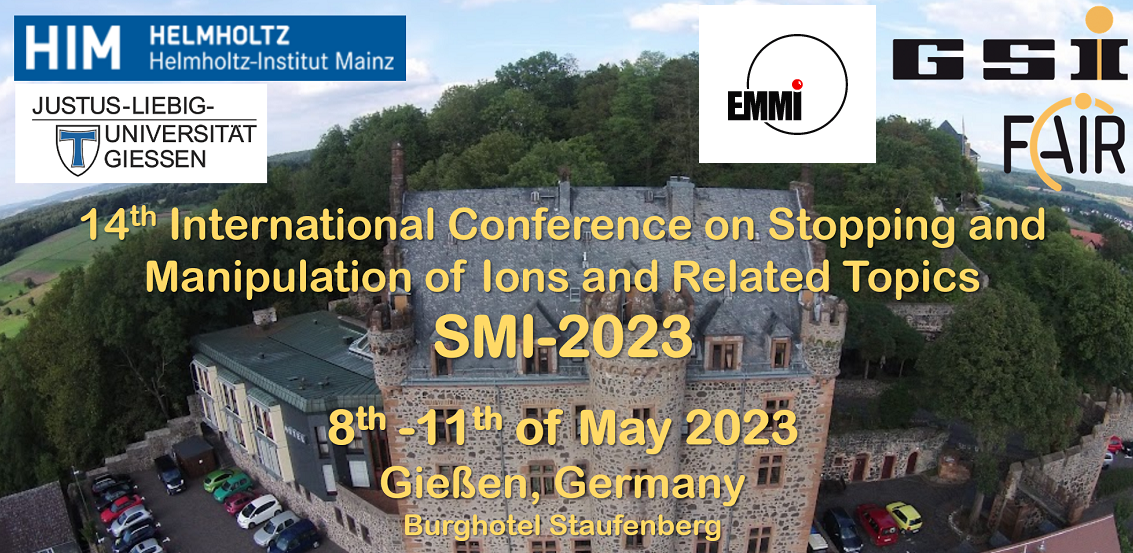Sprecher
Beschreibung
Different kinds of buffer gas cells find many applications for the thermalization of fast multi-charged ions and their extraction as secondary ion beams [1-3], also for studies of the heaviest elements [4]. Commonly, high vacuum conditions are needed downstream of the cell for further applications of the secondary ion beams. A universal high-pressure gas cell UniCell [5] was proposed recently, to be applied in physics and chemical studies of superheavy elements. Chemical studies are usually performed by the gas chromatography method at a pressure of up to 1 bar, with a narrow chromatography channel being formed by silicon detector arrays [6]. Thus, interfacing between UniCell and the detector channel requires effective transport of ions driven by the gas flow. Such a device, the Ion Transfer by Gas Flow (ITGF) device, was proposed and studied by COMSOL [7] simulations. The ITGF device is an RF-only gas channel, along which the cross section changes smoothly from the circular UniCell exit to the slit-like entry into the chromatography channel. The ITGF thus serves for an efficient ion extraction, and prevents collisions of ions with the wall. Our work numerically investigates this new ion transfer device in combination with UniCell. Parameter optimization were performed by COMSOL simulations; optimized settings suggest a fast (∼a few ms) and highly efficient (up to 100%) extraction of ions in a wide mass range from UniCell as well as their quantitative transmission through the ITGF into the high pressure environment specific for chemical studies.
References
[1] F. Schlottmann, M. Allers, A.T. Kirk et al., J. Am. Soc. Mass Spectrom. 30, 1813-1823 (2019).
[2] M. Ranjan, P. Dendooven, S. Purushothaman, et al., Nucl. Instrum. Meth. A 770, 87-97 (2015).
[3] G. Savard, A.F. Levand, B.J. Zabransky, Nucl. Instrum. Meth. B 376, 246-250 (2016).
[4] O. Kaleja et al., Nucl. Instrum. Meth. B 463, 280-285 (2020).
[5] V. Varentsov and A. Yakushev, Nucl. Instrum. Meth. A 940, 206-214 (2019).
[6] A. Yakushev et al., Front. Chem. 10, 976635 (2022).
[7] COMSOL, https://www.comsol.com

